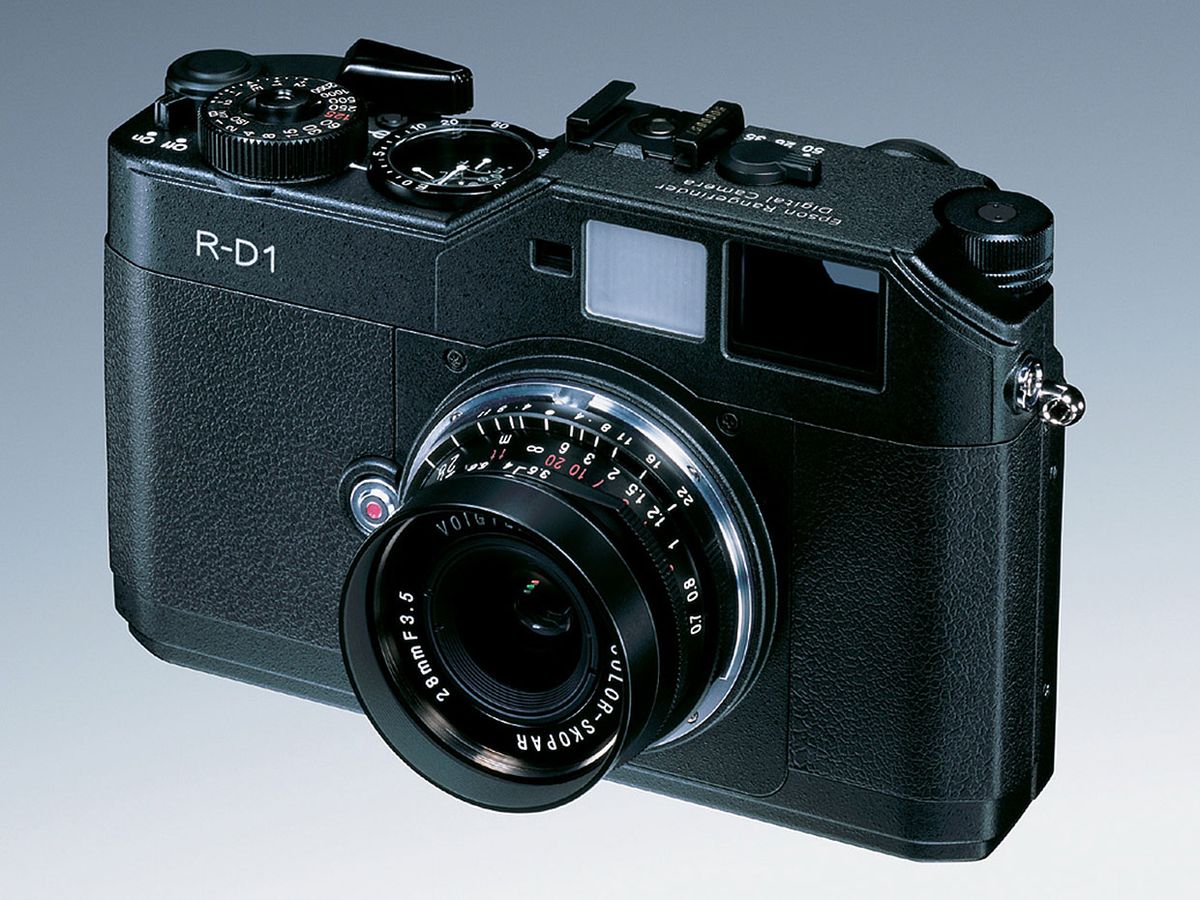The Consumer Electronics Hall of Fame: Epson R-D1
This odd hybrid camera had a mechanical shutter and a 6.1-megapixel image sensor

Starting in the 1940s and for the next 30 years or so, rangefinder cameras were de rigueur for those who wanted professional-looking photographs. But in the 1970s, single-lens reflex cameras were introduced, later followed by digital SLRs, which made it easy for even the most unskilled amateurs to consistently take decent photos. As digital SLRs soared in popularity, rangefinders became curios—mainly suitable, it seemed, for occasional use by professionals and serious hobbyists. Then Epson introduced the R-D1, the first digital rangefinder, which single-handedly returned rangefinders to combined commercial and artistic relevance.
Rangefinder cameras use two optical paths—one through the lens, one through a separate rangefinder—to get two slightly different angles on the same view, which are then superimposed. The photographer turns the lens focus ring, and when the two images align, the object is in focus.
SLRs, on the other hand, use mirrors and prisms to project an image coming through the lens onto a viewfinder, thereby allowing the user to focus it. When the shutter-release button is pressed, the main mirror is physically flipped up and out of the pathway between lens and film (or image sensor). Because the images that photographers see in their viewfinders come through the lens, what they see is what they get. For that reason, the arrangement lends itself well to a system in which the lenses can be changed. By the end of the 1970s, SLRs were outselling rangefinders by a big margin.

And yet rangefinders never quite went away. Lacking a mirror and associated hardware, they tend to be more compact and quieter. The absence of a mirror also means the lens can be closer to the film or sensor, which can translate into sharper images. There’s a reason why Leica still makes rangefinder cameras, and why people are willing to pay US $8,000 for one (lens not included).
Nevertheless, few anticipated the introduction, in 2004, of a digital rangefinder camera codeveloped by Epson and camera maker Cosina Voigtländer, which, like Leica, was known for its rangefinders (the company stopped making cameras in 2015). The R-D1 was the first digital rangefinder camera, beating Leica’s debut entry, the M8, by more than two years. It had a 1:1 viewfinder, allowing photographers to view entire scenes through the camera as if with the naked eye. And with a suggested retail price of $3,000, it was aimed at pro photographers and amateurs of means.
Epson delivered this technological innovation with a distinctly retro design. Post 1980, part of the attraction of rangefinders was snob appeal. Many rangefinder users then, and now, eschewed autofocus and autoexposure, preferring old-style manual control.

The R-D1 was a compelling hybrid of old and new. It looked and more or less behaved like a classic 35-mm rangefinder from the ’60s or ’70s, albeit with many advanced digital features, notably a 6.1-megapixel APS-C-format CCD imager from Sony. Some photographers could use it with many, if not most, of the lenses they had already accumulated; it was the first digital camera that used the M-mount, a standard for high-end optics developed by Leica in 1954 and used by Leica, Voigtländer, and half a dozen other camera makers.
The company even included what looked like a film-winding lever, just like old rangefinders had but seemingly unnecessary, as digital cameras have no film. What it actually did was cock the mechanical shutter—yes, the shutter was mechanical. This feature delighted more than a few enthusiasts already nostalgic for the fast-fading world of film cameras.


